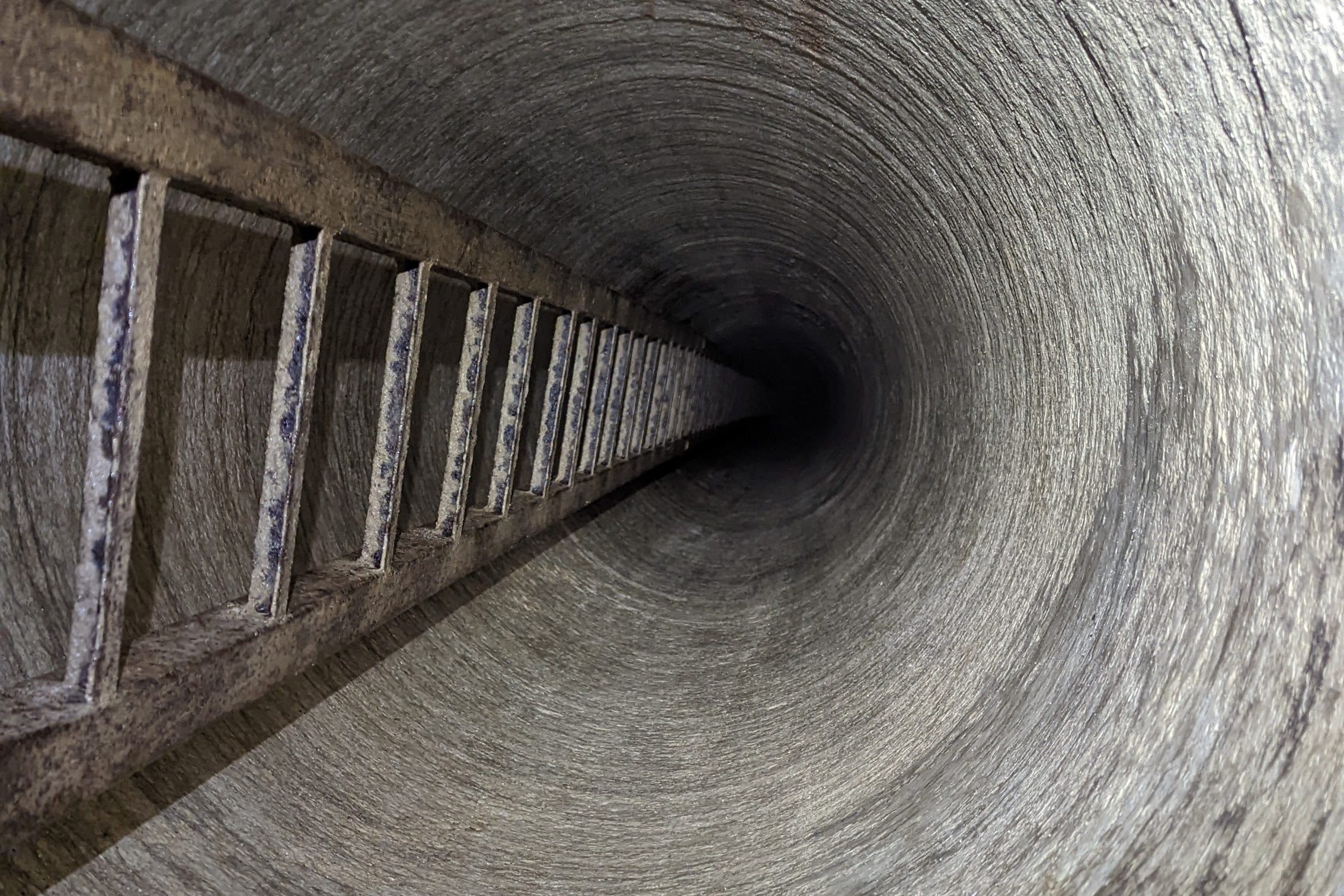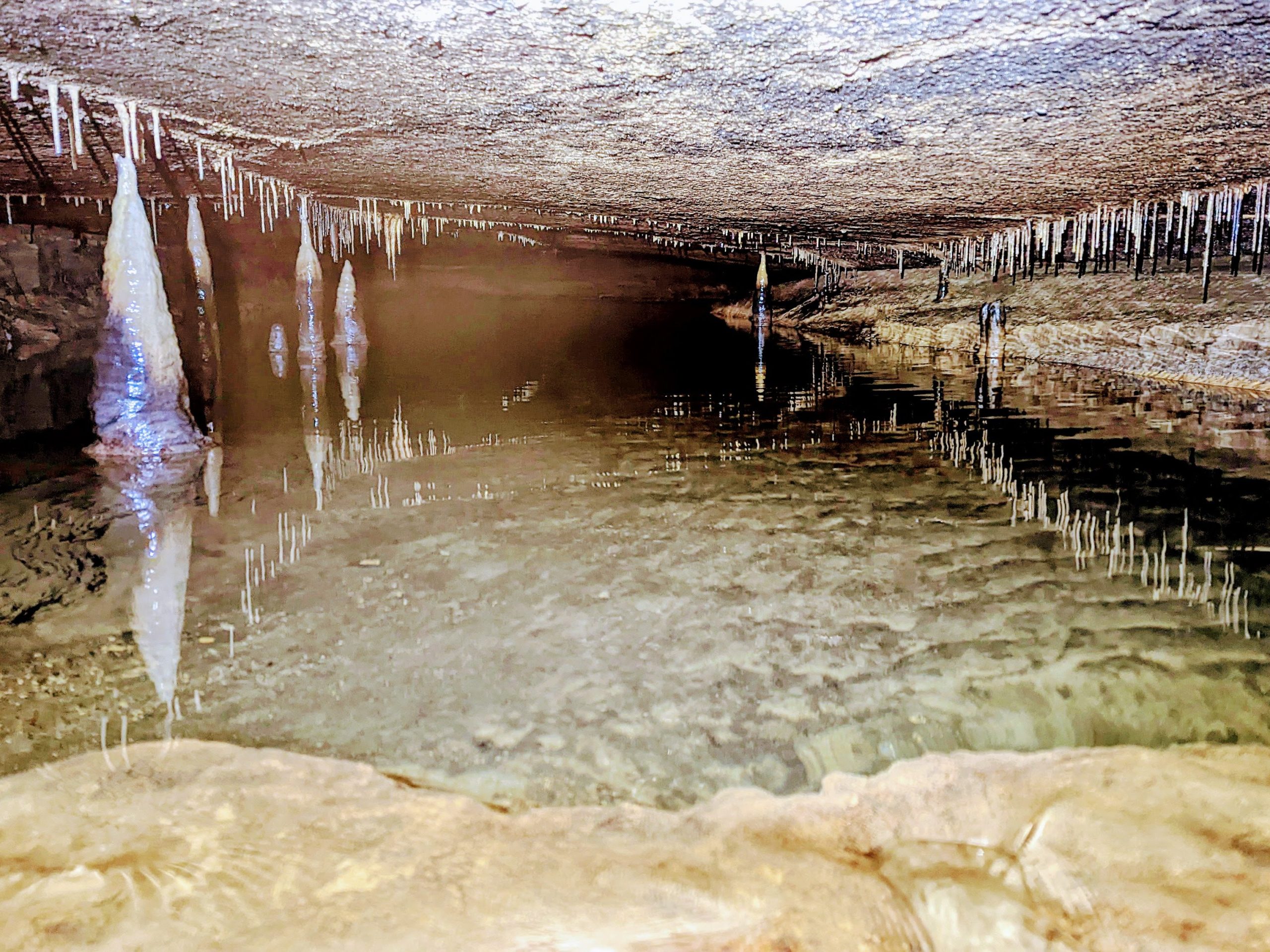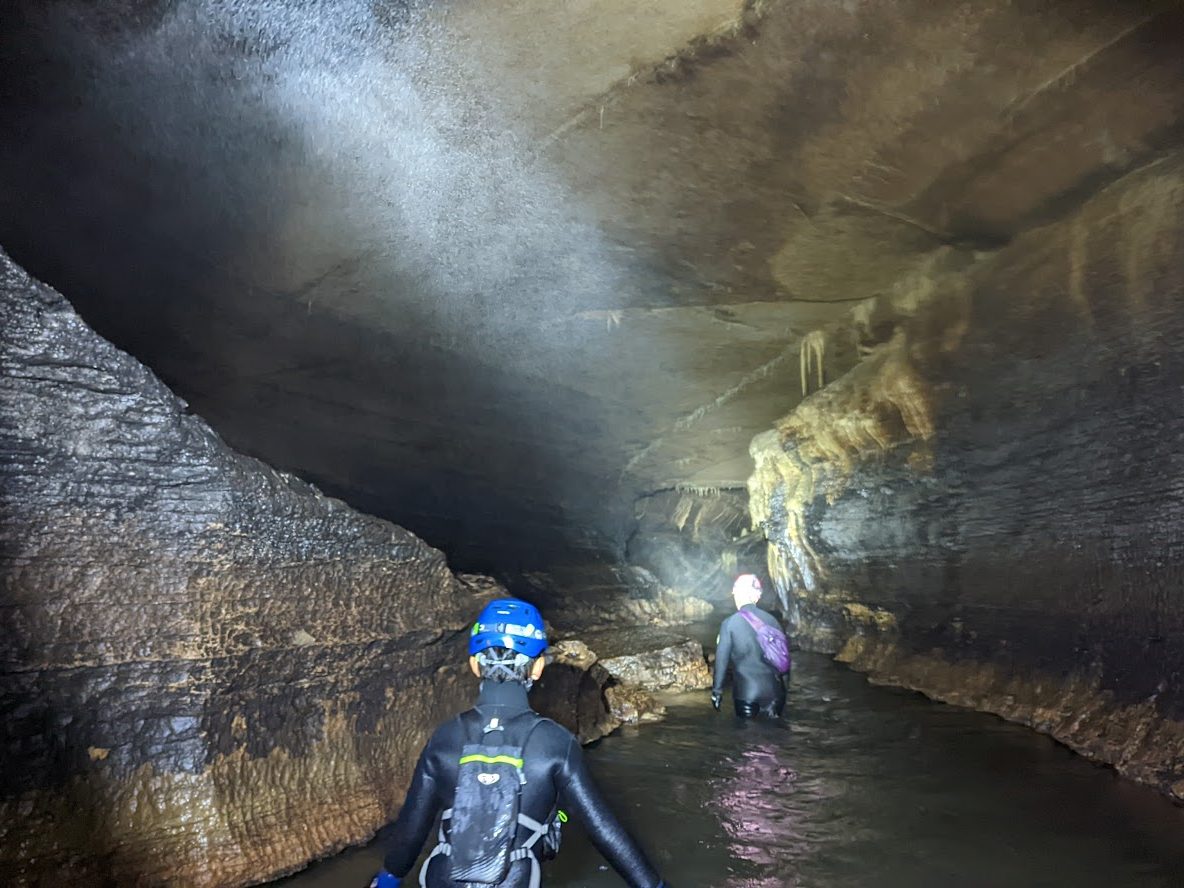Located in northeast Iowa, Coldwater Cave is close to UNI at a 90-minute drive. The cave, managed by the Iowa Grotto, is only open once a month for general caving. A cavern of 17.2 miles, the main channel is several miles long and has ceilings ranging from 6-60 feet high and widths from 5-30 feet. Side passages can quickly get tight before opening up into large domes and waterfalls. In order to access the cave, there is a 96-foot ladder in a vertical shaft located in a caving bunkhouse used by the cave explorers. Coldwater Cave provides a local resource for modeling planetary caves.



With water temperatures in the cavern varying from 2°C and 12°C, there is a risk of hypothermia and fatigue. In the hostile conditions, the cave still has a thriving micro-ecology feeding off the organics that permeate from the surface making the cave a prime target for studying the adaptions of life underground. With the harsh conditions (extreme cold, high humidity, submersion in water), technology that is viable in Coldwater will be able to be used in nearly any other cave system in the continental United States.
Three Main Fronts:
- Geophysical and geochemical mapping of a portion of the cave through LIDAR and spectroscopic measurements for use as a comparative planetology model for cave formation on Titan.
- Assess the viability of environmental DNA (eDNA) sampling of water sources as a method for studying biodiversity in areas of the cavern inaccessible to humans and its potential development as a technique for studying the extraterrestrial waters of other planetary bodies.
- Assess the physical conditions the human body is subject to while working in the cavern conditions and how they are manifested to provide early warnings of physical and mental fatigue factors for the development and use of novel biomonitoring techniques and possible applications to astronauts. The results of this partnership are expected to provide a first look at how Coldwater Cave can be used to understand planetary processes, the potential of life elsewhere, and the mental and physiological challenges of working in alien environments.